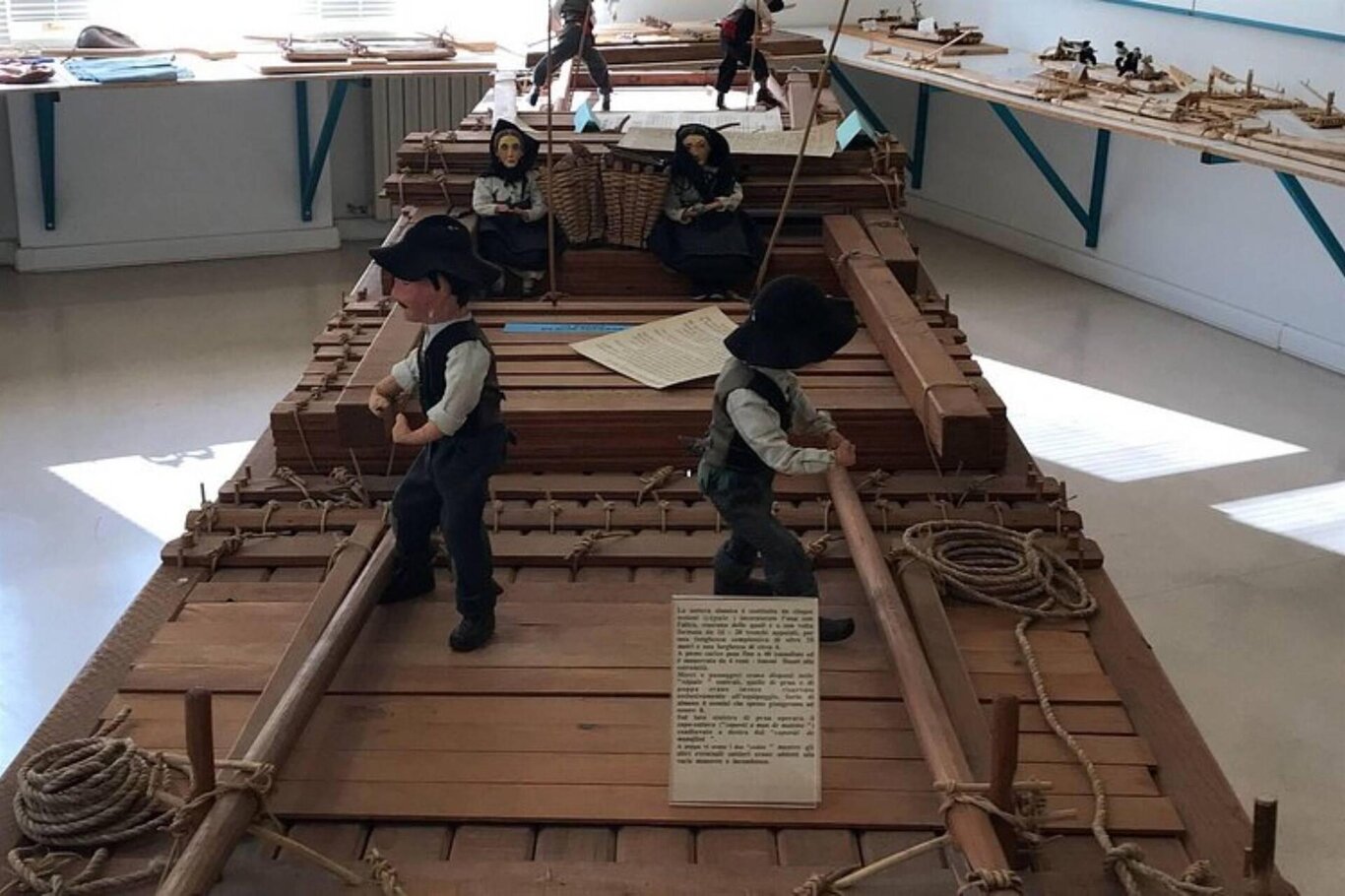The Museum is located in Codissago, a hamlet of Longarone, in the province of Belluno, a small town on the left bank of the Piave, inhabited until a few years after the First World War by the builders and operators of the large rafts that traveled down the Piave river to supply Venice.
It was created by the grandchildren and great-grandchildren of the ancient rafters, who wanted to ensure that the great work performed for centuries by their ancestors on the river would not be forgotten, and who, uniquely in Italy, have not forgotten the ancient technique used to bind the logs and form large rafts.
The human stories encompass a period from the time of the Romans, 200 A.D. (but probably this human activity dates back into the mists of time) until the advent of industrial society, which quickly swept away ways of life that had been preserved for centuries without substantial changes.
The Museum aims to illustrate all aspects concerning the cutting, transport, and transfer of large quantities of timber, floated, initially freely and then tied into rafts, from the valleys of the province of Belluno to the Venetian plain and especially to Venice, along what was the main route for transport, the Piave river.
The Museum can be visited independently by following a thematic path that crosses the 10 rooms and the Venetian sawmill, aided by a system of audioguides in 3 different languages: Italian, English, and German. Specific codes (QRCODE), are located in the rooms and identified by a progressive number of the route.



